
People with secondary education suffer higher unemployment rates

People with secondary education usually have a trade or are equipped with strong basic knowledge, which can integrate well into the labor market, compared to those with primary education.
But in Albania, the labor force with secondary education has a higher unemployment rate than people with higher education and those with basic education.
According to INSTAT data, the unemployment rate among the labor force with secondary education was 13.4% in the last quarter of 2024, while among those with 8/9 years of education it was 10.6% and among those with higher education it was 8.4%.
The official unemployment rate in Albania, in the fourth quarter of 2024, for the population aged 15 and over, is 8.8%, marking an annual decrease of 0.8 percentage points.
At the secondary education level in our country, vocational education remains underdeveloped. This branch provides stronger preparation for professions and better integration into the labor market.
In the 2023-2024 academic year, only 18% of secondary school students were in vocational schools. Studies show that those who complete vocational education have higher employment rates than those with high school education.
In the EU, countries, especially Germany, provide incentives to integrate students into vocational education and the labor market. However, in our country, since the education system is not linked to the labor market, it happens that with increasing educational level, difficulties in finding a job increase.
The education system and the labor market have been in a vicious circle for years, as businesses accuse the government of not responding with education systems that are relevant to the labor market.
On the other hand, in university circles, professors think that Albanian businesses are not developing branches of the economy that require high qualifications.
A large portion of students or young people who graduate from universities work in professions that do not require higher education, such as call centers, cashiers, waiters, etc.
The Albanian economy still has a competitive advantage in the free labor force and as a result, companies produce and export mainly low-value-added products (such as tailoring) that do not require a skilled workforce.
The lack of value-added jobs that require the engagement of professionals and pay well is considered one of the reasons why there is an increased emigration of skilled people. These conditions prevent young people from integrating into the labor market.
During the fourth quarter of 2024, the labor force participation rate for young people aged 15-29 is 53.6%.
This indicator has increased by 2.0 percentage points, compared to the fourth quarter of 2023, and has decreased by 2.4 percentage points compared to the third quarter of 2024./ Monitor
Latest news


Posta e mëngjesit/ Me 2 rreshta: Çfarë pati rëndësi dje në Shqipëri
2025-05-09 06:45:46

How did LaCivita change the DP campaign? Berisha: He studied the opponent
2025-05-08 22:49:51

David defeats Goliath
2025-05-08 22:15:50

Journalist: There are SPAK infiltrators in party headquarters
2025-05-08 21:55:15
Who is the new Pope?
2025-05-08 21:48:13
Berisha finally reveals when he will retire from politics
2025-05-08 21:33:46


LaCivita in Lezha: Albanians will fire Edi Rama from his job
2025-05-08 21:11:20


Berisha: LaCivita chose us because he believes in Reagan's program
2025-05-08 20:48:40
He rejected America to serve Pogradec, Genti Çela tells about life in "Elevate"
2025-05-08 20:26:28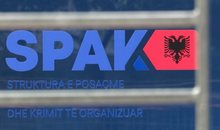




Pope Leo XIV greets the faithful for the first time in St. Peter's Square
2025-05-08 19:29:33




Photo session with LaCivitta in Tirana: For Great Albania
2025-05-08 18:40:18
Source: DASH decision a personal victory for Berisha
2025-05-08 18:30:10
Take off those crazy glasses and see where you've taken him?
2025-05-08 18:02:47
LDK files criminal charges against members of the incumbent Government
2025-05-08 18:02:00






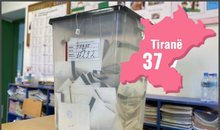
BIRN analysis: Tirana, the determining district for the future majority
2025-05-08 16:04:03




Chris LaCivita's contract with the DP, Berisha: 100% correct and clean
2025-05-08 15:11:11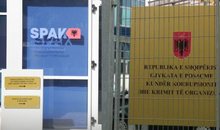

"These are the peak days", Berisha reveals when he will travel to the USA
2025-05-08 14:45:25


Endless boxes with filled-in ballots, DP demands separation of votes from Greece
2025-05-08 14:11:12


Photo/ Who are the 3 associates of Talo Çela arrested in Dubai?
2025-05-08 13:37:09

Hetimi për krimet zgjedhore, Altin Dumani zbarkon në Prokurorinë e Shkodrës
2025-05-08 13:06:21
DASH paves the way for Berisha, Alizoti: Great news on the eve of Great Albania!
2025-05-08 13:03:48
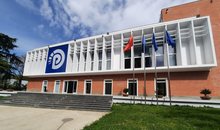
"Freedom works", DP welcomes the US position
2025-05-08 12:48:07

Black smoke rises from the Sistine Chapel, the Vatican still without a Pope
2025-05-08 12:26:18





Davide Pecorrelli extradited to Albania
2025-05-08 11:29:04
'May 11, Albania will react', Xhaferri: Electoral criminals will pay
2025-05-08 11:21:46

Gjin Gjoni: Non Grata fell, Rama should get ready to go to McGonigal
2025-05-08 11:01:54
May 8th deadline for immigrants to vote in Greece extended by one day
2025-05-08 10:48:42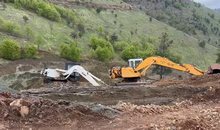
Collapse of massive chrome structure, still no trace of 29-year-old
2025-05-08 10:40:04
Vehicle bursts into flames in Paris Commune
2025-05-08 10:25:43
He gave land to his father and cousin, Basir Çollaku denounces the SP candidate
2025-05-08 10:16:16




Electoral Crimes/ BKH agents and Police conduct checks in Shkodra
2025-05-08 09:19:13
3 associates of Talo Çela arrested in Dubai
2025-05-08 09:02:28
Mouse in the owl's claws, Chris LaCivita responds directly to Rama
2025-05-08 08:45:40
Foreign exchange, how much foreign currencies are sold and bought today
2025-05-08 08:30:38
BIRN: Organized crime, the 'invisible party' of the Durrës elections
2025-05-08 08:26:35
Horoscope, what do the stars have in store for you today?
2025-05-08 08:08:15
Cloudy and rainy, what the weather is expected to be like throughout the day
2025-05-08 07:52:13
Posta e mëngjesit/ Me 2 rreshta: Çfarë pati rëndësi dje në Shqipëri
2025-05-08 07:40:16


Rama attacks Bardhi: Fier cannot be represented by the world's gas
2025-05-07 22:36:22



EU calls on Israel to lift humanitarian blockade in Gaza
2025-05-07 21:42:34
"Russia is "asking for a lot"! Vance calls for direct Moscow-Kiev talks
2025-05-07 21:20:16





Bank of Albania sets limits on home loans, Sejko: The maximum will be 85%
2025-05-07 20:16:10


